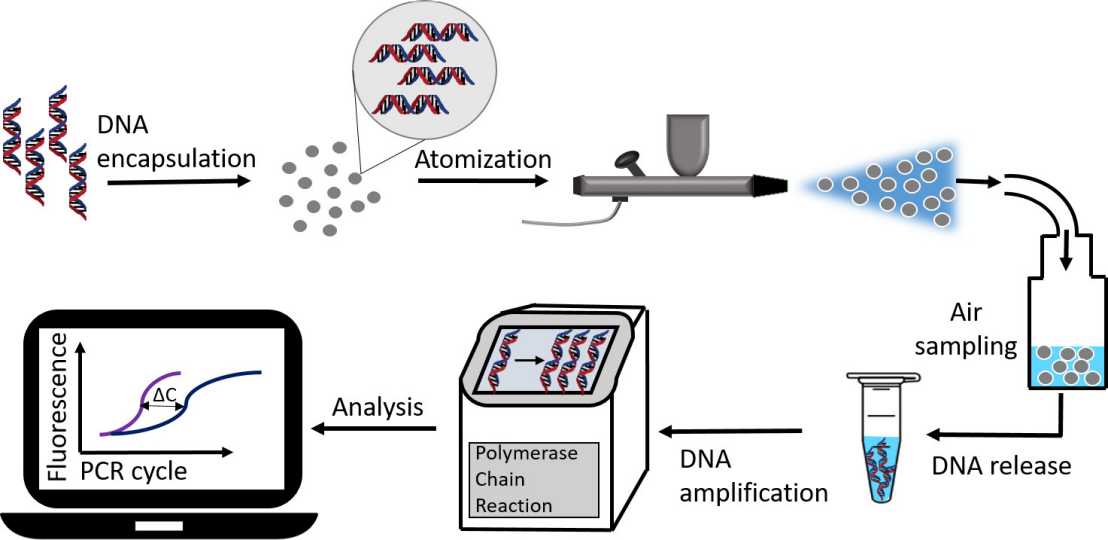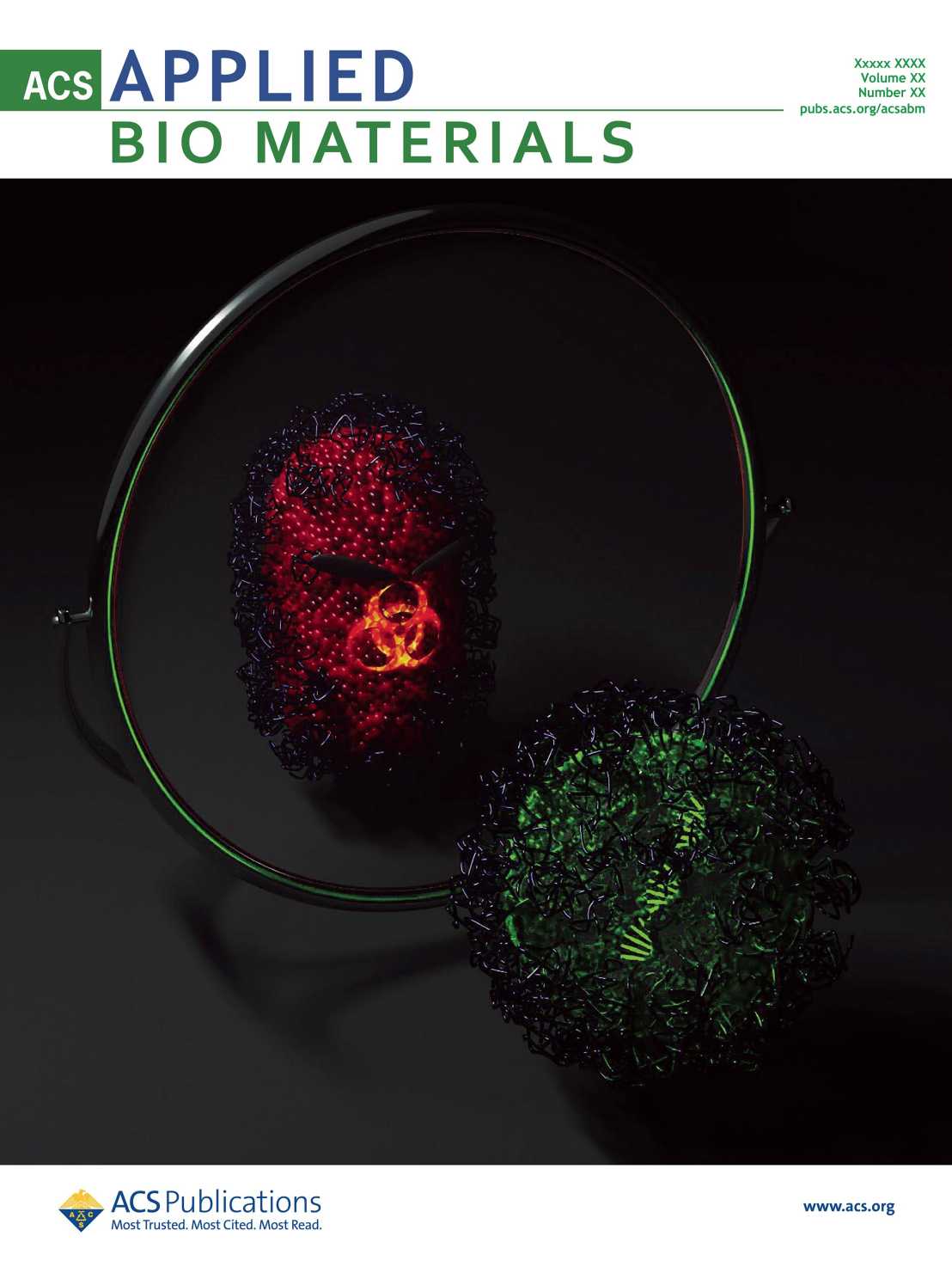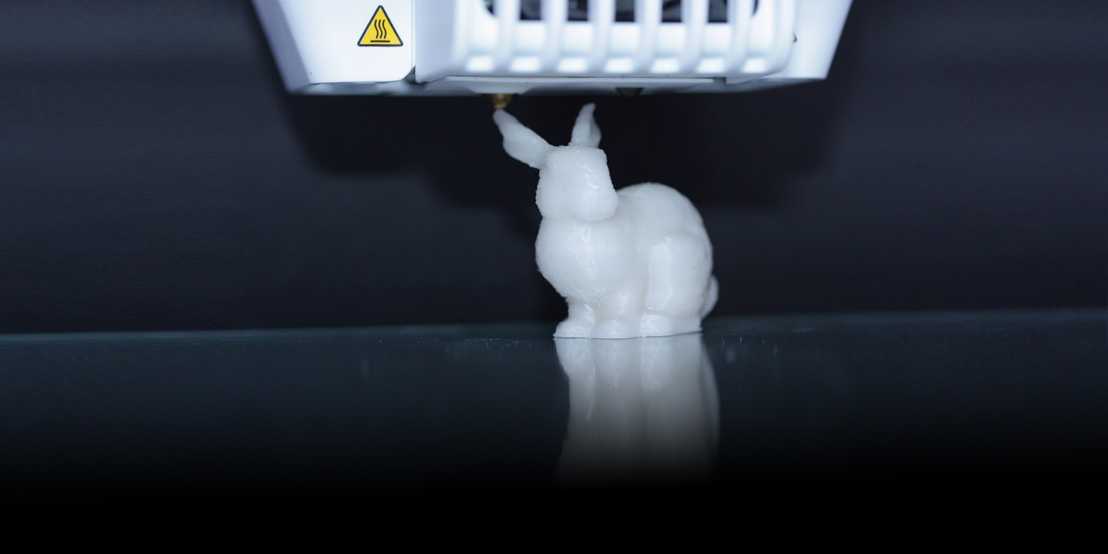Digital Chemical Engineering with DNA
DNA can be encapsulated in different types of nanoparticles. Silica nanoparticles protect the encapsulated DNA from severe environmental attack and can be used for aerosol tracing and digital-data applications. Lipid nanoparticles protect the DNA from enzymatic degradation and are susceptible towards ethanolic disinfection. This can be used for tracing in the hygienic context and surface disinfection validations.
We have an open position of a PhD student / postgraduate scientist in the field of DNA of things technologies and DNA cryptography. The position involves aspects of nucleic acid science, material science and computational science, and candidates are expected to have an interest and ideally a background in at least two of these fields. Please apply per E-Mail to Prof. Robert Grass.

Contact: Prof. Robert Grass
Aerosol tracing: Aerosolized particles play a significant role in human health and environmental risk management. (Nano-)Particles can be detected and quantified via the encapsulated DNA tag using quantitative real-time polymerase chain reaction (qPCR), allowing the application of these particles as tracer tools. Due to the excellent specificity and sensitivity of qPCR, particles can be detected down to ppb concentration levels (= µg/kg).
Silica nanoparticles protect the encapsulated DNA from severe environmental attack, are recognized as “safe” by the FDA and can easily be aerosolized. This technology can be used to follow (trace) aerosol dynamics and distributions.
Publications
- Luescher, A.M., Koch, J., Stark, W.J., Grass, R.N. Silica-encapsulated DNA tracers for measuring aerosol distribution dynamics in real-world settings. Indoor Air. 32:e12945, (2022). external page https://doi.org/10.1111/ina.12945

Contact: Lara Pfuderer
Surface disinfection: Lipid nanoparticles are susceptible towards ethanolic disinfection due to the disintegration of their lipid membrane. This allows for the comparison with bacteria and viruses and the lipid nanoparticles can therefore be used as synthetic surrogates. This technology can be used to model the transmission pathways of microbial pathogens and for surface disinfection validations.
Publications
- Pfuderer, L., Stark, W.J., Grass, R.N. Synthetic Microbial Surrogates Consisting of Lipid Nanoparticles Encapsulating DNA for the Validation of Surface Disinfection Procedures. ACS Applied Bio Materials 6(3), 1252-1259 (2023). external page https://doi.org/10.1021/acsabm.3c00004

Contact: Prof. Robert Grass
DNA, encapsulated in silica nanoparticles, is as stable as DNA in natural fossils. We have investigated the use of encapsulated DNA for long-term digital information storage. As a prototype we stored Archimedes’ Methods of Mechanical Theorems and the Swiss Federal Charter (total of 83 kB) as synthetically synthesized DNA. By combining DNA encapsulation in artificial fossils and external error correction coding, digital data could be recovered error-free after 2000 years of simulated ambient-temperature storage. We have also stored the music album external page Mezzanine from Massive Attack in DNA, and for Netflix stored a whole external page Episode of the series Biohackers in DNA.
Current work in this area includes engineering methods to decrease the cost of array-based DNA synthesis and identifying and modelling possible error sources in the DNA data storage pipeline (writing – storing – reading). This is required to make DNA data storage competitive with current data storage methods (e.g. magnetic storage).
Nanoparticles encapsulating DNA can also be embedded into products, labelling them with product information encoded in DNA (“DNA of things”). A 3D printed bunny, which has its own building instructions stored within using DNA technologies, is exhibited at the external page Haus der Geschichte in Bonn.
Our group is also involved in the EU-funded project DNA FAIRYLIGHTS which explores storage of data in three-dimensional DNA nanostructures. Metallic nanoparticles are arranged along the DNA strand and can then be read by an optoelectronic system.
Another possible application of DNA in the digital realm is in the field of cryptography, an area we are actively working on.
Publications
- Antkowiak, P.L., Lietard, J., Darestani, M.Z. et al. Low cost DNA data storage using photolithographic synthesis and advanced information reconstruction and error correction. Nat Commun 11, 5345 (2020). external page https://doi.org/10.1038/s41467-020-19148-3
- Koch, J., Gantenbein, S., Masania, K. et al. A DNA-of-things storage architecture to create materials with embedded memory. Nat Biotechnol 38, 39–43 (2020). external page https://doi.org/10.1038/s41587-019-0356-z
- Doricchi, A., Platnich, C.M., Gimpel, A. et al. Emerging Approaches to DNA Data Storage: Challenges and Prospects. ACS Nano 16(11), 17552-17571 (2022) . external page https://doi.org/10.1021/acsnano.2c06748